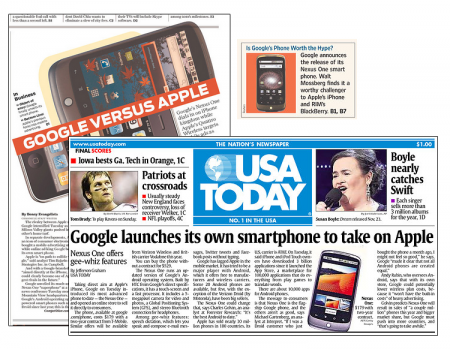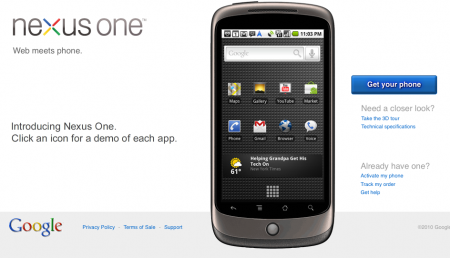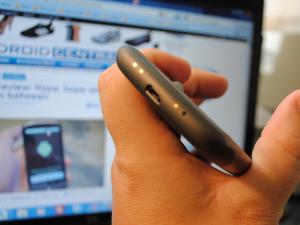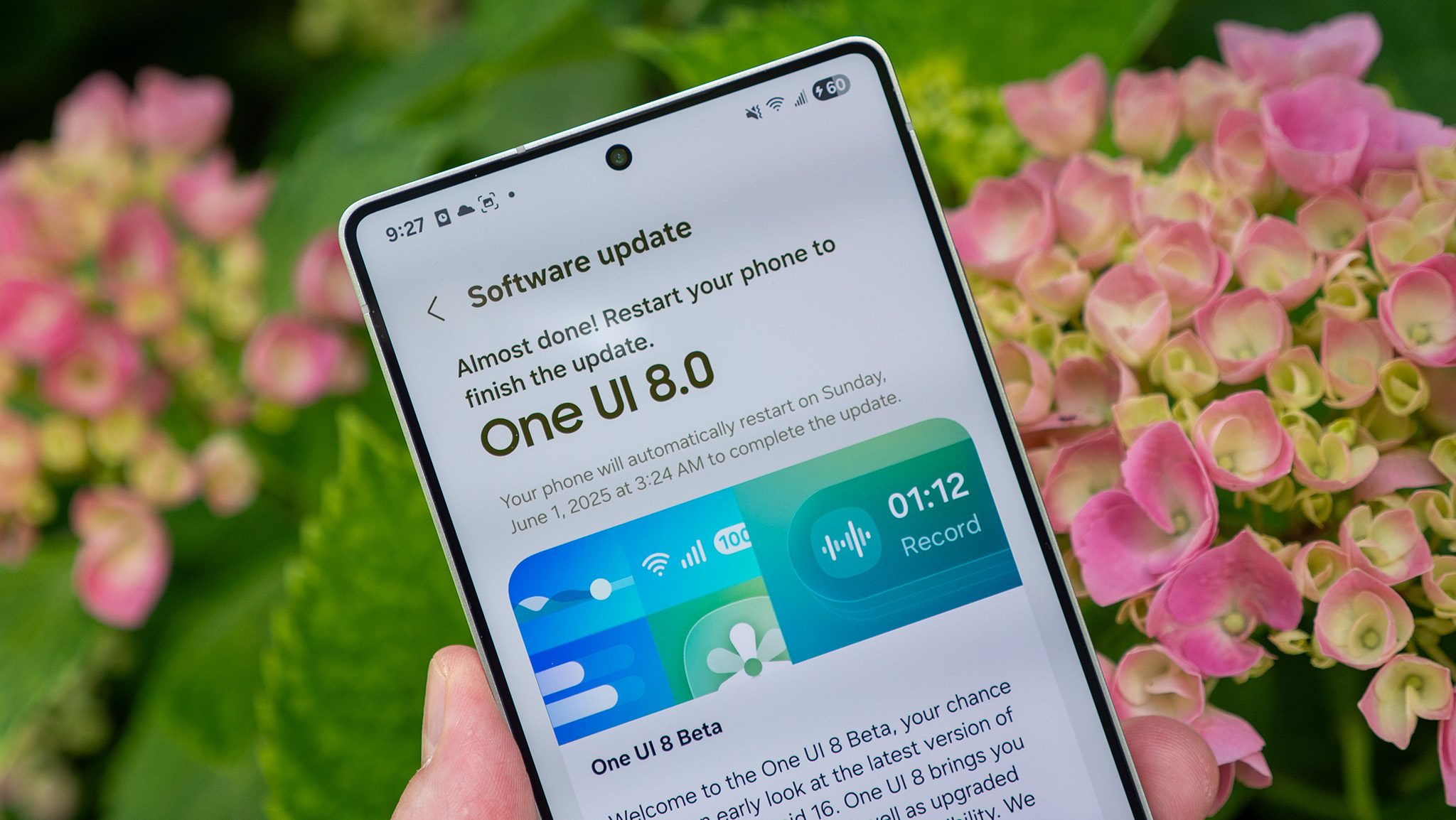Google Nexus One retrospective
Call the Nexus One what you want -- failed experiment, iClone, ahead of its time, whatever. We'll call it a solid phone, born from Google's desire to "shake up" the smartphone market, both in terms of available hardware and the way it was sold to consumers. Some of it worked. Some of it didn't.
We're not going to recap the life of every Android smartphone when it gets replaced. That would be silly. But the Nexus One was Google's earnest attempt to change things, and it deserves a final send-off, which is marginally less silly. And so, after the break, a Nexus One retrospective.
Nexus One: Born, Jan. 5, 2010
OK, that's not quite true. While Google announced the Nexus One at a special press event in San Francisco in early January 2010, it actually had given the phone to employees about a month earlier, with a nod and a wink that they weren't really supposed to brag about it in public. You know how that goes, of course.
So what was Google keeping semi-secret? Oh, just the first smartphone (manufactured by HTC) with a 3.7-inch AMOLED touchscreen, the first in the U.S. with a 1GHz Snapdragon processor, and the first with Android 2.1. Also on the hardware end was plugless charging via a trio of contacts on the bottom bezel of the phone. The old trackball remained, to the delight of some, and the disdain of others. A car dock and desktop dock leaked out, and eventually were sold to consumers.
The Nexus One's birth made front-page news. It's death? Not so much.
Some minor hardware niggles arose, mainly surrounding the touchscreen. AMOLED's not great outdoors, because you can't see the screen due to reflectivity. Also, there are issues with the N1's touchscreen itself, in that its multitouch implementation could be a little inaccurate. Not deal-breakers for most people, but headaches, for sure. Software-wise, a lack of multitouch at launch was a point of frustration, as was a problem keeping a connection to T-Mobile's 3G network.
So that's the phone, more or less, in a few brief sentences. A predictable improvement for the time, and not necessarily innovative, though it was a decent step up from most Android smartphones that were available at the time (the one exception being the Motorola Droid, we'd argue).
Get the latest news from Android Central, your trusted companion in the world of Android
The Google phone web store
The part that Google really tried to shake up was in the way the phone was sold. With the launch of the Nexus One came the Google phone web store, at Google.com/phone. It was (in the United States, anyway), the only place you could purchase the Nexus One. There were a couple of options at first: an unlocked, unsubsidized GSM Nexus One that worked on T-Mobile's 3G and EDGE networks, or AT&T's EDGE network. A Verizon version was promised at launch, months later, was declared dead. In March, a proper AT&T (and Rogers) 3G version of the Nexus One was released by Google. That same day, Sprint said it, too, would get a Nexus One. That never happened.
The web store model was plagued by some major issues, all of which compounded each other. Consider:
- No try before you buy: You couldn't actually try the phone before buying it. Was it too small? Too big? How was the keyboard? No way to tell before plunking down your money.
- Lack of marketing: If a phone's not actually going to be available in a store, you're going to drum up some marketing power. And aside from an initial media push after its announcement, Google didn't do too much to actively press the Nexus One. There was a one-line mention on the Google.com home page (and that's no small thing for Google to have done), as well as AdSense ads. But there was zilch in the way of traditional mainstream marketing. No magazine ads. No newspaper ads. No television spots.
- Who's running this place? At first, there was mass confusion over who was in charge/responsible for customer service. Google threw its hands up and pointed at T-Mobile and HTC as if to say "Hey, we just sell the things." Google finally took charge, its help forums flourished and a customer service phone number was set up. Better late than never, but much damage was done.
- Confusing pricing/upgrade process: It's bad enough that we're traditionally stuck with subsidized pricing in the United States. It didn't help any that the process for qualifying for a T-Mobile subsidy was flubbed, which ultimately led to a price drop and refunds.
In May 2010, Google announced that its phone web store wasn't working out, and it was ending the strategy. VP of product management Mario Queiroz explained at Google's IO developers conference:
"The web store was another element of the strategy. It was, in many ways, an experiment for us. ... Android was in a very different place six months ago. ... And today, we believe that the right thing to do from a distribution perspective is different from what it was a few months ago. And so we've chosen to double down on our partnerships."
On July 21, 2010, Google ceased selling the Nexus One online.
Long live the Nexus One
Failed distribution strategy aside, the Nexus One is, was and (likely) will be a solid phone for a while longer. Let's remember some of the positives:
The beginning of Android's 1GHz era
CPU speed isn't everything, but it's not nothing, either. The Nexus One was the first Android smartphone in the United States to sport the higher speeds. Not that the Android smartphone market wasn't headed in that direction, but it's a spec worth touting.
Plugless charging and Bluetooth sync
It's a shame this one hasn't really caught on anywhere else. The two docks officially released by Google take advantage of three little gold-colored contacts on the bottom bezel of the phone to make a charging connection, meaning you don't actually plug anything into the phone to charge it. In the case of the desktop dock, that means very quick access to your phone. No messing about with plugs.
In addition, the docks took advantage of the Nexus One's Bluetooth capability, meaning you could plug speakers into the desktop dock, and use the car dock to stream music of phone calls.
Trackball notifications
The trackball isn't the most elegant of features you'll ever see on a smartphone. But it served its purpose, and then some. It allowed you to make acute adjustments of cursor location, or scroll through icons instead of touching the screen. But where it really shined (literally) was in its implementation of color notifications. Not officially supported until Android 2.2 was released (it was in custom ROMs earlier), the trackball will blink in different colors for different notifications. As we're not expecting any more trackballs anytime soon, we'll have to let this one live in memorium.
The (admittedly failed) web store model
OK, so it didn't work. But some of us equate the cell phone store experience with that of buying a car. It's not anywhere near a fair comparison, and we still recommend you try a phone before you buy it. But for us crazy die-hard smartphone nerds who are going to buy a phone anyway, it was a nice no-hassle method of purchasing a phone and having it here the next day.
A hacker's dream

The Nexus One from its inception was Google's next-generation developers' phone. Like the HTC Ion before it, it was designed to let you do pretty much whatever you wanted to it. A simple "fastboot OEM unlock" command opened up the bootloader so that you could load custom ROMs. No impossible security, no fears that a Google gestapo would hunt you down, just a warning that you'd be voiding your warranty.
And from there, you open a whole new world of custom ROMs. It was on the Nexus One that we got our first taste of the all new Sense UI, ported over from the European HTC Desire. And that's just the tip of the iceberg. If you can do it, you can do it on a Nexus One.
Farewell, old friend
And with that, we pay our respects to the Google Nexus One. Oh, it'll be around for a while still, living on in the hands of developers and the die-hard Android fans who bought one (or more than one) in the first place. But it's a great phone that was taken before its time.
As for the store? Eh, it was an interesting idea, but poorly implemented, and likely doomed anyway, giving the nature of the way people prefer to purchase phones -- subsidized and in person.
Fair thee well, Nexus One. Fair thee well.






